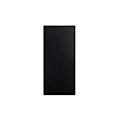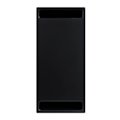A truly pioneering solution, the compact 3440A PoE-powered subwoofer enhances Genelec’s versatile Smart IP family of installation loudspeakers, offering the convenience of networked audio with the benefits of single-cable connectivity. And by redefining the reference for low-frequency output using PoE power, the subwoofer pushes installation audio quality to new greater heights of performance.
3440A
Smart IP Active Subwoofer

SPL
106 dB

Amplifier Power
70 W Bass (Class D)

Frequency Response
35 Hz - 120 Hz (-6 dB)

Accuracy of Frequency Response
± 2.5 dB (35 Hz - 120 Hz)

Driver Dimensions
⌀ 165 mm Bass (view in inches)

Dimensions
H 475 x W 475 x D 220 mm, (view in inches)

Weight
14.5 kg / 32.0 lb

Connections
1 x RJ45 AES67 / Dante Input
1 x Euroblock Analog Input
3440A Smart IP Active Subwoofer
Technical Specifications
A truly pioneering solution, the compact 3440A PoE-powered subwoofer enhances Genelec’s versatile Smart IP family of installation loudspeakers, offering the convenience of networked audio with the benefits of single-cable connectivity. And by redefining the reference for low-frequency output using PoE power, the subwoofer pushes installation audio quality to new greater heights of performance.
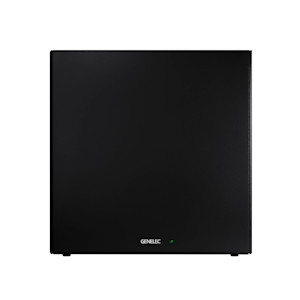
System Specifications
Frequency Response
35 Hz - 120 Hz (± 2.5 dB)
Low cutoff -6dB
35 Hz
High cutoff -6dB
120 Hz
SPL
Peak SPL
≥106 dB
Short term max SPL Maximum short-term sine wave SPL output on axis in half space, average 40 Hz to 85 Hz, at 1 m, using PoE+ power
≥106 dB
Long term max SPL Maximum long-term SPL output in same conditions with band-limited random pink noise, at 1 m, using PoE+ power (limited by driver unit protection circuit)
≥101 dB
Self-generated noise
Self-generated noise Self-generated noise level in free space, at 1 m on the acoustical axis, A-weighted
≤5 dB
Weight
Weight14.5 kg (32.0 lb)
Dimensions
Height
475 mm
Width
475 mm
Depth
220 mm
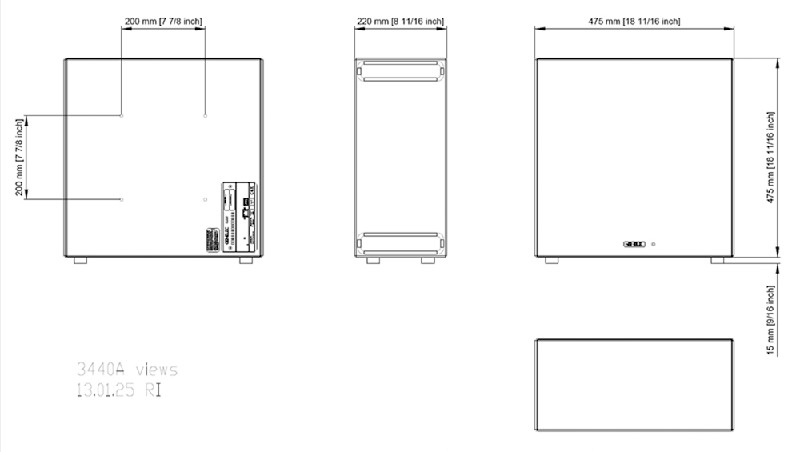
Drivers
Driver type
Cone
Diameter
165 mm
Harmonic distortion
Amplifier Section
Amplifiers
70 W Class D
Mains voltage
PoE+/PoE
Power consumption
ISS Active
≤5 W
Idle
≤4 W
Signal processing section
Connectors
Input Ethernet (Power over Ethernet and Audio over IP)
Input 1 x Euroblock analog input. Audio input is via a 10 kOhm balanced connector.
Product Variants
Product codes
For even more technical details please see product operating manual.
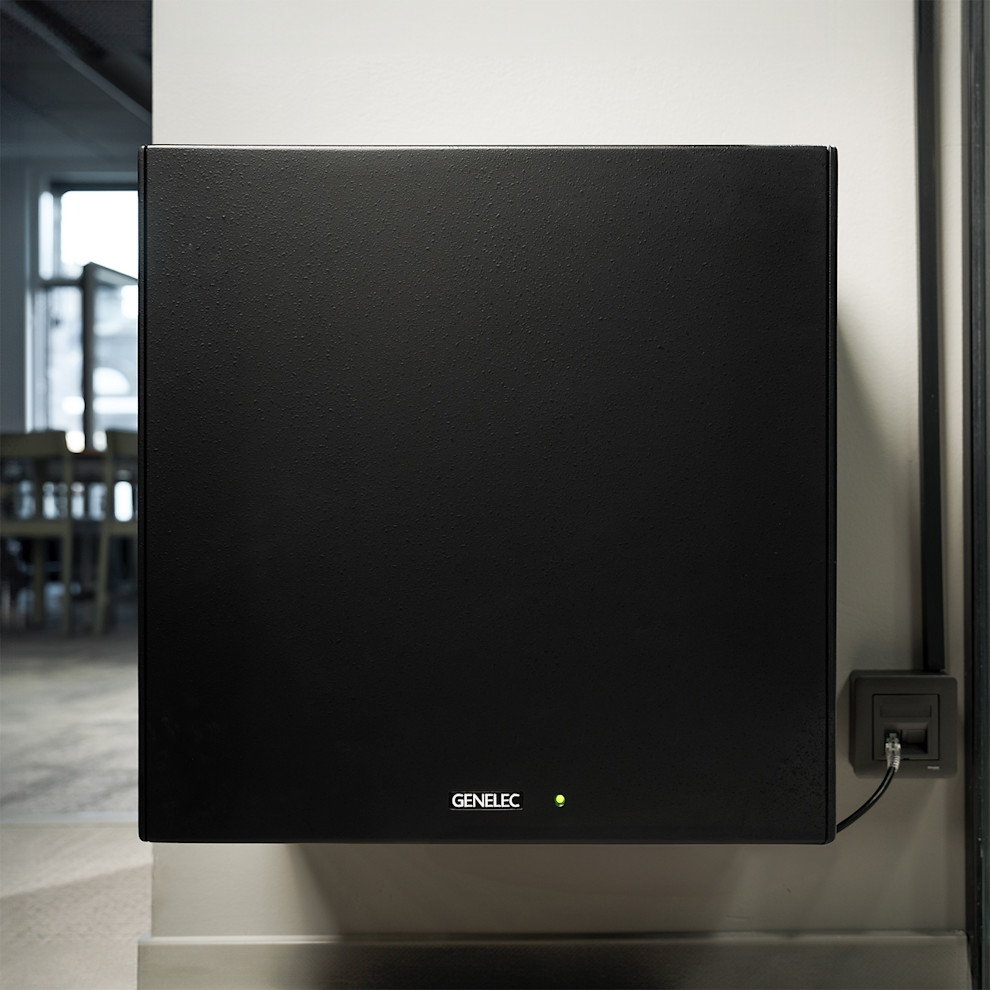
Uncompromised quality
With over four decades as the world's leading provider of professional studio monitoring loudspeakers, Genelec is uniquely placed to offer installed audio solutions with the highest standard of truthful, detailed and rich reproduction. Each loudspeaker is designed and manufactured to the highest sustainability standards and built to provide decades of reliable daily use. Wherever audio is intended to create an attractive experience that visitors enjoy, Genelec Smart IP loudspeakers ensure a smooth and flexible install, with a high-quality, engaging result.
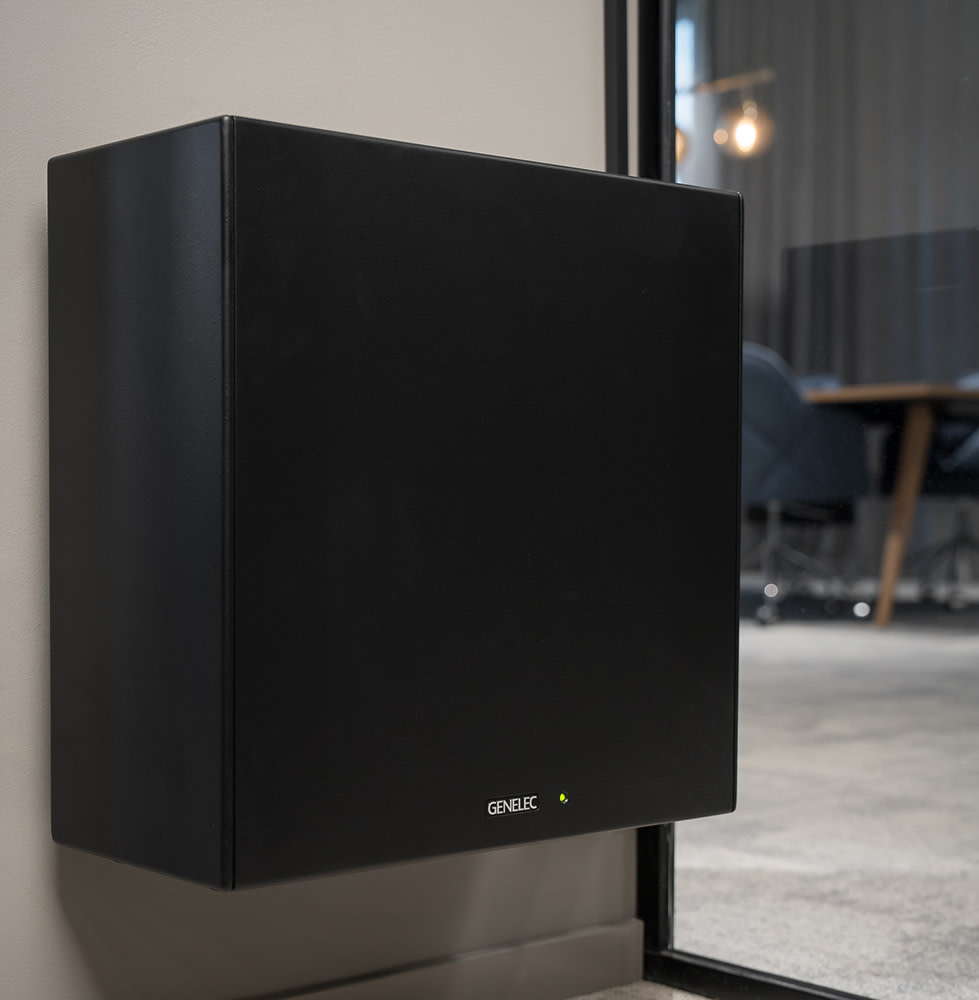
Smart IP perfects Power-over-IP
Using Genelec patented power storage technology, the 3440A confidently delivers an impressive 106 dB of short-term SPL for flawless bass reproduction. All Genelec Smart IP loudspeakers offer the effortless scalability of open IP networking – with the added convenience of receiving PoE+ and PoE level power plus audio streams and management using only a single standard CAT cable. Audio is flawlessly delivered uncompressed using Dante or AES67 low latency streaming technologies.

Ease of installation
Genelec Smart IP Manager software discovers Smart IP devices and allows detailed configuration, calibration and supervision of all Smart IP system loudspeakers, rooms, zones, and audio channels. Every Smart IP loudspeaker includes a public API command set for house automation systems and benefits from a series of ready-made drivers, enabling quick-and-easy integration with a wide range of applications.
Available in black or white, the 3440A is easy to install either freestanding upright or on the side, as well as mounted on the wall or ceiling with its optional installation accessory.
Genelec’s wide range of Smart IP on-wall, ceiling and pendant loudspeaker solutions supports a wealth of installation opportunities. Using the 3440A Subwoofer, systems can be built with convenience, offering the aesthetic beauty and renowned uniform coverage, clarity and intelligibility of Smart IP, making this technology the most complete, flexible, and future-proof choice for AV integrators and installers everywhere.
Key Technologies
Audio-over-IP (AoIP)
PoE Power
Smart IP Manager

Active Crossovers

Bass Management System

Intelligent Signal Sensing (ISS™) Technology

Protection Circuitry

Versatile Mountings

Optimised Amplifiers
Audio-over-IP (AoIP)
The advancing adoption of networked audio has been huge, so we've responded by developing both AV loudspeaker and studio solutions that support AoIP streams, with all the precision and clarity that audio professionals have come to rely on from Genelec.
For demanding AV applications, our growing family of Smart IP loudspeaker models support Ravenna and Dante-compatible AES67 streams. Smart IP employs uncompressed low-latency audio streaming directly into each loudspeaker, with loudspeaker synchronisation to sub-microsecond level for solid acoustic imaging.
For audio professionals using AoIP connectivity, the Genelec 9401A System Management Device enables the smooth integration of Smart Active (SAM) Monitors and Subwoofers into SAM system layouts, from stereo to immersive, using ST2110, AES67 and Ravenna streams as the source – while offering full support for room adaption from our powerful Genelec Loudspeaker Manager (GLM) software.
PoE Power
Power-over-Ethernet allows our Smart IP loudspeakers to deliver impressive performance over a single CAT cable.
Our Smart IP loudspeakers support the widely used PoE+ and PoE technology standards. IEEE 802.3at (30 W) is recommended, with IEEE 802.3af (15 W) simply reducing the time that maximum power output can be maintained.
Smart IP loudspeakers utilise proprietary internal power management that delivers a significantly higher SPL than was previously possible via any conventional PoE. In fact, Smart IP can produce maximum SPL whenever needed, sufficient to power small and medium sized audio systems — a world first.
Smart IP’s internal power supply stores power, to enable Smart IP loudspeakers to work with real audio signals, music, and speech. Since audio signals are dynamic, periods of high peak power typically have finite duration while the effective average power level, or RMS power, remains much lower.
By employing PoE over a single standard CAT cable, Smart IP loudspeakers offer low power consumption and reduced cabling requirements, for a sustainable and affordable loudspeaker solution.
Smart IP Manager
Powerful software that provides total control of Smart IP networked loudspeaker systems.
To address the specific needs of installers, Smart IP Manager offers an array of software tools focused on solving specific installation audio problems – including device discovery, room equalisation, system organisation and status monitoring. This saves installers a substantial amount of working time and ensures that Smart IP loudspeaker systems always perform with outstanding clarity and speech intelligibility – even in acoustically challenging environments.
Smart IP Manager software is specifically designed to be used by installers during the system set-up, and allows the configuration of almost unlimited numbers of rooms, zones, loudspeakers and audio channels. After which, a public API command set allows Smart IP speakers to then be integrated into house automation systems ¬– enabling end user control of simple parameters including volume, power on/off, loudspeaker activity and a section of pre-programmed settings.
To help cope with challenging acoustic environments, Smart IP Manager integrates with the loudspeaker’s internal DSP to enable the analysis and corrective equalisation of any detrimental room acoustics, along with control of delay and level alignment. Internal memory within the speaker then provides instant recall of settings, allowing fast and accurate deployment in any environment.
Active crossover operating at low signal levels.

Audio electronic crossovers allow the audio signal to be split into separate frequency bands that are separately routed to individual power amplifiers, which are then connected to specific transducers optimised for a particular frequency band.
Active crossovers come in both digital and analogue varieties. Genelec digital active crossovers include additional signal processing, such as driver protection, delay, and equalisation.
Genelec analogue active crossover filters contain electronic components that are operated at low signal levels suitable for power amplifier inputs. This is in contrast to passive crossovers that operate at the high signal levels of the power amplifier's outputs, having to handle high currents and, in some cases, high voltages.
In a typical two-way system the active crossover needs two power amplifiers — one for the woofer and one for the tweeter.
The active crossover design offers multiple benefits:
- The frequency response becomes independent of any dynamic changes in the driver's electrical characteristics or the drive level.
- There is increased flexibility and precision for adjusting and fine-tuning each output frequency response for the specific drivers used.
- Each driver has its own signal processing and power amplifier. This isolates each driver from the drive signals handled by the other drivers, reducing inter-modulation distortion and overdriving problems.
- The ability to compensate for sensitivity variations between drivers.
- The possibility to compensate for frequency and phase response anomalies associated with a driver’s characteristics within the intended pass-band.
- The flat frequency response of a high-quality active loudspeaker is a result of the combined effect of the crossover filter response, power amplifier responses and driver responses in a loudspeaker enclosure.
Using the active approach enables frequency response adjustments and optimisation of the full loudspeaker system, placed in various room environments, without expensive external equalisers. The end result is a simpler, more reliable, efficient, consistent and precise active loudspeaker system.
Bass Management System handles multichannel low frequency content.
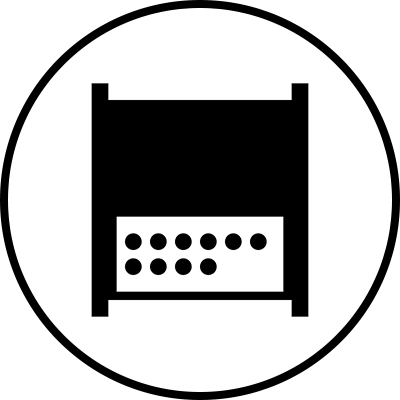
The principle of bass management is that the bass content of the main channels and the Low Frequency Effect (LFE) channel are directed and reproduced only by loudspeakers capable of handling them, whether they are main system loudspeakers or one or more subwoofer(s).
In stereo reproduction, signals from 20 Hz to 20 kHz need to be replayed. Large multi-way monitoring systems will reproduce such a wide bandwidth evenly. With multichannel audio, professional and consumer audio systems must also be able to reproduce audio between 20 Hz and 20 kHz for each channel. To achieve this, main monitors, subwoofers and crossover electronics should work together.
A Bass Management system uses either analogue electronic circuitry or software based filtering which will filter low frequency information from the main channels and route that information to one, or more, subwoofer feed.
The dedicated LFE channel can also be monitored via that subwoofer and added to the low frequencies of the other main channels. Therefore, the Bass Management’s basic and main goal is to ensure that the entire audio bandwidth of all channels can be accurately monitored.

The benefits of the Bass Management System:
- The subwoofer extends the system frequency response down the lower limit of the audible range
- Monitor can produce a higher maximum sound level when not reproducing low frequencies
- Optimized low frequency reproduction by selecting adequate subwoofer location; monitors can also be placed more freely
- Subwoofer’s output are aligned in level and phase with monitors allowing flat and accurate reproduction down to 19 Hz and across the crossover point
- LFE channel output level (0 or +10 dB re. main channels) can be selected for accurate reproduction depending on the source type
- The ability to bypass the subwoofer allows to evaluate the audible impact of the subwoofer
Intelligent Signal Sensing (ISS™) for power consumption reduction in stand-by mode.

Introduced early 2013, Genelec’s Intelligent Signal-Sensing technology has been developed to meet with both European Union ErP Directives and Genelec's own ambitious sustainability standards.
The Intelligent Signal Sensing, ISS™ circuitry tracks the signal input of the loudspeaker and detects if it is in use. If the ISS circuit does not find any audio on the input for a period of time, it sets the loudspeaker to a low-power sleep state and the loudspeaker will consume less than 0.5 watts. When an input signal is detected, the loudspeaker immediately turns itself on.
Additionally an ‘ISS Disable’ switch is located on each product’s back plate next to the other room response controls. First, when the mains power switch of the loudspeaker is set to 'ON', the ISS™ auto-start function (low-power sleep state on/off) of the loudspeaker is active.

If this function is not desired, the ISS™ function can be disabled by setting the 'ISS Disable' switch on the back panel to 'ON' position. In this mode, the monitor is only powered on and off using the mains power switch.
Note that the mains power switch will always turn the monitor off completely.
Sophisticated drive unit protection circuitry for safe operation.

When working in critical audio production environments it is essential that monitoring systems remain reliable and functional at all times. One of the main reasons behind Genelec’s excellent success in broadcasting environments is the reliability of our products and a key element behind the reliability is the internal protection circuitry found in all products since 1978.
The protection circuitry prevents driver failures by detecting signal levels, and in case of sudden peaks or constantly too high levels, taking the signal level down automatically. Of course this feature does not affect the sound quality in any way when working within the specifications of the loudspeaker, but only prevents inadequate input signals from breaking the loudspeaker.

Protection circuitry features and benefits:
- Reduces the output level when required, (e.g. when driver voice coil temperature reaches the safe limit), which highly improves system reliability.
- Appropriate protection circuitry design in every loudspeaker and subwoofer enables the maximisation of system output sound level.
Versatile mounting options for all installation needs.

In addition to perfect acoustical design and advanced tailoring options to optimize the loudspeaker’s behaviour to the room environment, Genelec loudspeakers offer a variety of mounting options for easy installation in different applications.
Our wide range of accessories and fixed mounting points on the back of our aluminium enclosure products offer solutions to all common installation situations. M6 support points have been integrated in the die-cast enclosure for wall and ceiling mounts.
Some models also feature a 3/8” thread at the bottom of the enclosure to fit a robust microphone stand. Other larger and heavier models feature M10 fixing points. Special floor stand plates have been designed in order to fit the Iso-Pod stand that is part of our product design.
With these features our loudspeakers have found their way to a variety of applications beyond the professional audio and studio world, for example in commercial and AV installation projects as well as in home environments all around the world.
Each transducer is driven by its own optimised amplifier.

Audio electronic crossovers allow to split the audio signal into separate frequency bands that can be separately routed to individual power amplifiers, which are then connected to specific transducers optimised for a particular frequency band.
In a typical 2-way loudspeaker system, the active crossover needs two power amplifiers — one for the woofer and one for the tweeter. The power amplifiers are connected directly to the drivers of an active loudspeaker, resulting in the power amplifier’s load becoming much simpler and well known. Each driver-specific power amplifier has only a limited frequency range to amplify (the power amplifier is placed after the active crossover) and this adds to the ease of design.
The active design principle offers multiple benefits:
- The power amplifiers are directly connected to the speaker drivers, maximising the control exerted by the power amplifier’s damping on the driver’s voice coil, reducing the consequences of dynamic changes in the driver electrical characteristics. This may improve the transient response of the system.
- There is a reduction in the power amplifier output requirement. With no energy lost in the passive crossover filter components, the amplifier power output requirements are reduced considerably (by up to 1/2 in some cases) without any reduction in the acoustic power output of the loudspeaker system. This can reduce costs and increase audio quality and system reliability.
- No loss between amplifier and driver units results in maximum acoustic efficiency.
- Active technology can achieve superior sound output vs. size vs. low frequency cut-off performance.
- All loudspeakers are delivered as a factory aligned system (amplifiers, crossover electronics and enclosure-driver systems).
Downloads
Documents
3440A Operating Manual Genelec Smart IP Brochure Smart IP Manager - Operating Manual Smart IP FAQFAQ
The 4410, 4420 and 4430 on-wall loudspeakers all share the same basic design, with each one progressively featuring a larger bass driver and larger enclosure dimensions. The 4410 differs from the 4420 and 4430 in that it features no Euroblock analogue audio input.
The 4435 is an in-ceiling loudspeaker designed for discreet installations and is available with square and round grilles.
The 4436 is a pendant loudspeaker especially designed for installations in open high-ceiling spaces, easing targeted sound distribution.
The addition of the 3440A Smart IP subwoofer to the Smart IP range provides an effective low-frequency audio solution that combines exceptional sound quality and networked convenience. The 3440A’s proprietary internal power supply technology stores power in order to produce an impressive 106 dB of short-term SPL whenever needed.
The free Controller app is designed for smaller, less complex installations and avoids the need for a third-party control system. It provides the end user with simple day-to-day control of key functions via one smartphone or tablet (iOS or Android) and allows the user to access zones that have been set up by the installer using Smart IP Manager.
The audio streaming into each loudspeaker is uncompressed and low latency. Therefore, you can adjust system playback level at the source, or you can also adjust loudspeaker level with public API commands, or via the
Smart IP Controller app.







